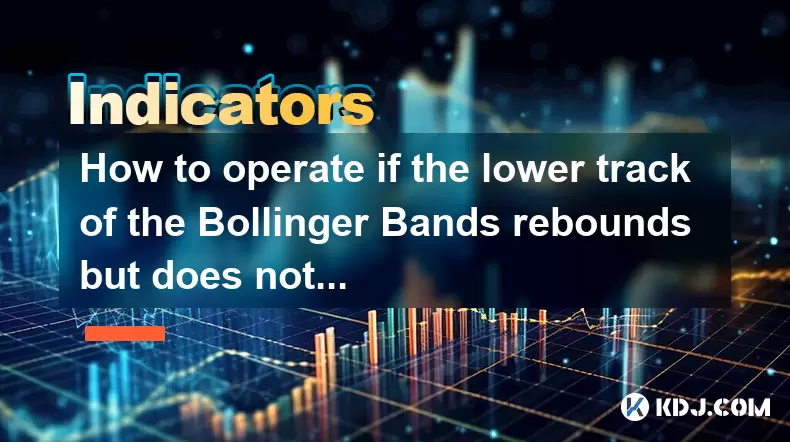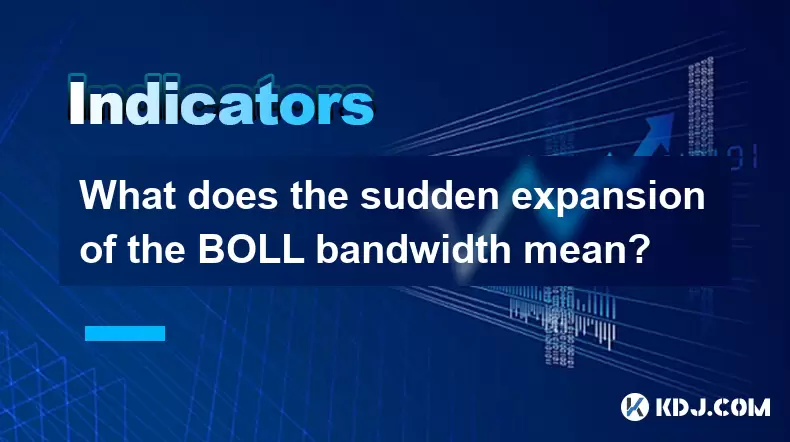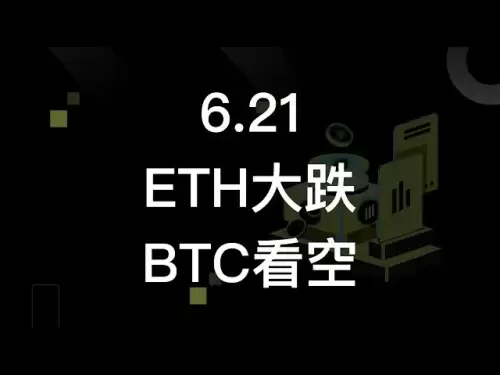-
 Bitcoin
Bitcoin $106,754.6083
1.33% -
 Ethereum
Ethereum $2,625.8249
3.80% -
 Tether USDt
Tether USDt $1.0001
-0.03% -
 XRP
XRP $2.1891
1.67% -
 BNB
BNB $654.5220
0.66% -
 Solana
Solana $156.9428
7.28% -
 USDC
USDC $0.9998
0.00% -
 Dogecoin
Dogecoin $0.1780
1.14% -
 TRON
TRON $0.2706
-0.16% -
 Cardano
Cardano $0.6470
2.77% -
 Hyperliquid
Hyperliquid $44.6467
10.24% -
 Sui
Sui $3.1128
3.86% -
 Bitcoin Cash
Bitcoin Cash $455.7646
3.00% -
 Chainlink
Chainlink $13.6858
4.08% -
 UNUS SED LEO
UNUS SED LEO $9.2682
0.21% -
 Avalanche
Avalanche $19.7433
3.79% -
 Stellar
Stellar $0.2616
1.64% -
 Toncoin
Toncoin $3.0222
2.19% -
 Shiba Inu
Shiba Inu $0.0...01220
1.49% -
 Hedera
Hedera $0.1580
2.75% -
 Litecoin
Litecoin $87.4964
2.29% -
 Polkadot
Polkadot $3.8958
3.05% -
 Ethena USDe
Ethena USDe $1.0000
-0.04% -
 Monero
Monero $317.2263
0.26% -
 Bitget Token
Bitget Token $4.5985
1.68% -
 Dai
Dai $0.9999
0.00% -
 Pepe
Pepe $0.0...01140
2.44% -
 Uniswap
Uniswap $7.6065
5.29% -
 Pi
Pi $0.6042
-2.00% -
 Aave
Aave $289.6343
6.02%
How to operate if the lower track of the Bollinger Bands rebounds but does not increase in volume?
A rebound off the lower Bollinger Band without rising volume often signals weak buying interest, suggesting a potential false reversal in crypto markets.
Jun 21, 2025 at 11:07 am

Understanding the Bollinger Bands and Their Relevance in Cryptocurrency Trading
The Bollinger Bands are a widely used technical indicator in cryptocurrency trading. They consist of three lines: the middle band, which is typically a 20-day simple moving average (SMA), and two outer bands that represent standard deviations above and below the SMA. When the price touches or moves toward the lower band, it often signals oversold conditions. However, when this occurs without a corresponding increase in volume, traders may find themselves in uncertain territory.
In crypto markets, where volatility is high and trends can reverse rapidly, interpreting such signals becomes critical. The key lies in understanding not only the mechanics of Bollinger Bands but also how volume plays into market psychology and momentum.
Volume acts as a confirmation tool for many technical setups. A rebound from the lower band accompanied by rising volume suggests strong buyer interest. Conversely, a rebound with low or declining volume may indicate hesitation or lack of conviction among buyers.
What Does It Mean When the Lower Band Rebounds Without Volume?
When the price bounces off the lower Bollinger Band but fails to see a surge in volume, it's often interpreted as a weak or false signal. This situation implies that although the price has found temporary support at the lower band, there isn't enough buying pressure to sustain an upward movement.
This phenomenon is particularly common during sideways or consolidation phases in the market. In such cases, the price may oscillate between the bands without significant directional bias. Traders who rely solely on Bollinger Bands might misinterpret these rebounds as potential reversal points, only to be met with little follow-through.
False signals are frequent in crypto due to the market’s speculative nature and the influence of large players or "whales" who can manipulate short-term movements without necessarily changing the underlying trend.
How to Confirm Whether the Rebound Is Valid or Not
Given the importance of volume in confirming price action, traders must look beyond just the visual bounce from the lower band. Here are several methods to validate whether the rebound has real potential:
- Use volume indicators like OBV (On-Balance Volume) or Chaikin Money Flow to assess buying pressure.
- Look for candlestick patterns that suggest bullish reversals, such as hammer or engulfing candles.
- Check for confluence with other indicators like RSI or MACD to confirm divergence or momentum shifts.
For example, if the price touches the lower band and forms a bullish engulfing pattern while the RSI crosses above 30 and the MACD line turns positive, even without a spike in volume, it could still be a valid setup.
Confluence increases the probability of success in any trade. No single indicator should be used in isolation, especially in fast-moving crypto markets.
Adjusting Your Strategy Based on Market Conditions
It's essential to tailor your approach depending on whether the market is trending or ranging. In a strong uptrend, a touch of the lower band may serve as a good entry point, even without a volume spike, because the overall sentiment remains bullish.
However, in a downtrend or choppy market, a rebound from the lower band without volume should be treated with caution. Traders may consider waiting for a break above the middle band before considering long positions or looking for signs of bearish exhaustion if they’re planning to go short.
- Analyze the broader time frame to determine the dominant trend.
- Watch for support/resistance levels aligning with the Bollinger Bands.
- Consider using tighter stop losses when entering trades based on weak signals.
Adaptability is key in crypto trading. What works in one market phase may fail in another. Always assess the context before acting on a technical signal.
Practical Steps for Trading This Scenario
If you're faced with a Bollinger Band lower track rebound that lacks volume, here’s how to proceed methodically:
- Observe the price structure: Is the market consolidating or trending? If it's consolidating, expect limited follow-through.
- Wait for confirmation: Let the price move above the middle band or form a clear bullish pattern before taking action.
- Use order types strategically: Place limit orders slightly above the middle band instead of chasing the rebound immediately.
- Monitor volume closely: If volume picks up after the initial rebound, reassess the trade opportunity dynamically.
- Set realistic targets and stops: Given the uncertainty, keep risk-reward ratios favorable and manage expectations.
By following these steps, traders can avoid premature entries and reduce the emotional component of decision-making.
Discipline and patience are crucial traits for successful trading, especially when dealing with ambiguous signals like a low-volume bounce from the Bollinger Bands.
Frequently Asked Questions
Q: Can I trade a bounce from the Bollinger Bands without volume confirmation in crypto markets?
A: Yes, but with caution. You should use additional tools such as candlestick patterns, RSI, or MACD to filter out false signals and ensure that the broader market structure supports a reversal.
Q: Why does volume matter so much in confirming a Bollinger Band bounce?
A: Volume reflects the strength of participation behind a price move. High volume indicates strong conviction among traders, whereas low volume suggests indecision or weakness in the move.
Q: Should I always wait for volume to increase before entering a trade after a Bollinger Band rebound?
A: Not necessarily, but it's safer to do so unless there is strong confluence from other indicators or chart patterns suggesting a valid reversal.
Q: How can I differentiate between a false and genuine bounce from the lower Bollinger Band?
A: Look for factors like candlestick formations, divergence in momentum indicators, and whether the price breaks convincingly above the middle band. Also, check if the next few candles show strength or retrace quickly.
Disclaimer:info@kdj.com
The information provided is not trading advice. kdj.com does not assume any responsibility for any investments made based on the information provided in this article. Cryptocurrencies are highly volatile and it is highly recommended that you invest with caution after thorough research!
If you believe that the content used on this website infringes your copyright, please contact us immediately (info@kdj.com) and we will delete it promptly.
- Matt Furie's NFT Mishap: When Pepe's Creator Met a Mint Exploit
- 2025-06-21 20:25:12
- Solana Meme Coins: A Comeback Story or a Flash in the Pan?
- 2025-06-21 20:45:12
- Telegram Scam Alert: $50M Crypto Loss in SUI, SEI, and NEAR – What You Need to Know
- 2025-06-21 20:25:12
- Bitcoin Solaris: The Next Big Thing in Blockchain Presales?
- 2025-06-21 20:45:12
- Wyoming, Stable Token, Cryptocurrency: A Cowboy State's Digital Frontier
- 2025-06-21 21:05:12
- Bitcoin's Bullish Signals and Optimism's Edge: A New York State of Mind
- 2025-06-21 21:25:12
Related knowledge

Does the sudden contraction of ATR indicate the end of the trend?
Jun 20,2025 at 11:14pm
Understanding ATR and Its Role in Technical AnalysisThe Average True Range (ATR) is a technical indicator used to measure market volatility. Developed by J. Welles Wilder, ATR calculates the average range of price movement over a specified period, typically 14 periods. It does not indicate direction—only volatility. Traders use ATR to gauge how much an ...

Is it invalid if the DMI crosses but the ADX does not expand?
Jun 21,2025 at 09:35am
Understanding the DMI and ADX RelationshipIn technical analysis, the Directional Movement Index (DMI) consists of two lines: +DI (Positive Directional Indicator) and -DI (Negative Directional Indicator). These indicators are used to determine the direction of a trend. When +DI crosses above -DI, it is often interpreted as a bullish signal, while the opp...

How to filter false signals when the SAR indicator frequently flips?
Jun 21,2025 at 08:43pm
Understanding the SAR Indicator and Its BehaviorThe SAR (Stop and Reverse) indicator is a popular technical analysis tool used in cryptocurrency trading to identify potential reversals in price movement. It appears as a series of dots placed either above or below the price chart, signaling bullish or bearish trends. When the dots are below the price, it...

Is the trend continuation when the Williams indicator is oversold but there is no rebound?
Jun 20,2025 at 11:42pm
Understanding the Williams %R IndicatorThe Williams %R indicator, also known as the Williams Percent Range, is a momentum oscillator used in technical analysis to identify overbought and oversold levels in price movements. It typically ranges from 0 to -100, where values above -20 are considered overbought and values below -80 are considered oversold. T...

What does the sudden expansion of the BOLL bandwidth mean?
Jun 21,2025 at 01:49pm
Understanding the BOLL IndicatorThe BOLL (Bollinger Bands) indicator is a widely used technical analysis tool in cryptocurrency trading. It consists of three lines: a simple moving average (SMA) in the center, with upper and lower bands calculated based on standard deviations from that SMA. These bands dynamically adjust to price volatility. When trader...

Is the golden cross of the ROC indicator below the zero axis effective?
Jun 20,2025 at 09:42pm
Understanding the ROC Indicator and Its Role in Cryptocurrency TradingThe Rate of Change (ROC) indicator is a momentum oscillator widely used by traders to assess the speed at which cryptocurrency prices are changing. It measures the percentage difference between the current price and the price from a certain number of periods ago. The ROC helps identif...

Does the sudden contraction of ATR indicate the end of the trend?
Jun 20,2025 at 11:14pm
Understanding ATR and Its Role in Technical AnalysisThe Average True Range (ATR) is a technical indicator used to measure market volatility. Developed by J. Welles Wilder, ATR calculates the average range of price movement over a specified period, typically 14 periods. It does not indicate direction—only volatility. Traders use ATR to gauge how much an ...

Is it invalid if the DMI crosses but the ADX does not expand?
Jun 21,2025 at 09:35am
Understanding the DMI and ADX RelationshipIn technical analysis, the Directional Movement Index (DMI) consists of two lines: +DI (Positive Directional Indicator) and -DI (Negative Directional Indicator). These indicators are used to determine the direction of a trend. When +DI crosses above -DI, it is often interpreted as a bullish signal, while the opp...

How to filter false signals when the SAR indicator frequently flips?
Jun 21,2025 at 08:43pm
Understanding the SAR Indicator and Its BehaviorThe SAR (Stop and Reverse) indicator is a popular technical analysis tool used in cryptocurrency trading to identify potential reversals in price movement. It appears as a series of dots placed either above or below the price chart, signaling bullish or bearish trends. When the dots are below the price, it...

Is the trend continuation when the Williams indicator is oversold but there is no rebound?
Jun 20,2025 at 11:42pm
Understanding the Williams %R IndicatorThe Williams %R indicator, also known as the Williams Percent Range, is a momentum oscillator used in technical analysis to identify overbought and oversold levels in price movements. It typically ranges from 0 to -100, where values above -20 are considered overbought and values below -80 are considered oversold. T...

What does the sudden expansion of the BOLL bandwidth mean?
Jun 21,2025 at 01:49pm
Understanding the BOLL IndicatorThe BOLL (Bollinger Bands) indicator is a widely used technical analysis tool in cryptocurrency trading. It consists of three lines: a simple moving average (SMA) in the center, with upper and lower bands calculated based on standard deviations from that SMA. These bands dynamically adjust to price volatility. When trader...

Is the golden cross of the ROC indicator below the zero axis effective?
Jun 20,2025 at 09:42pm
Understanding the ROC Indicator and Its Role in Cryptocurrency TradingThe Rate of Change (ROC) indicator is a momentum oscillator widely used by traders to assess the speed at which cryptocurrency prices are changing. It measures the percentage difference between the current price and the price from a certain number of periods ago. The ROC helps identif...
See all articles

























































































